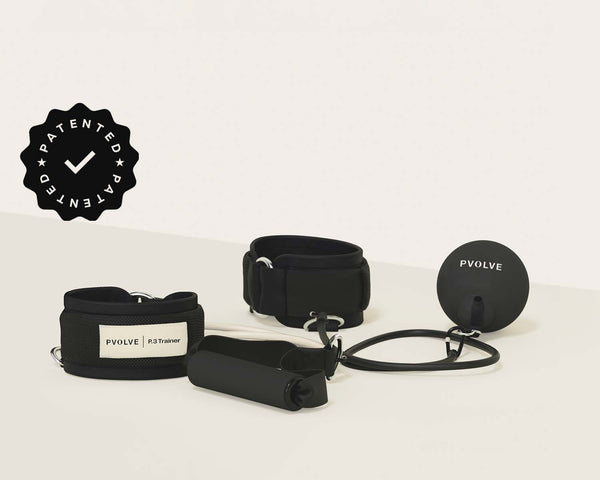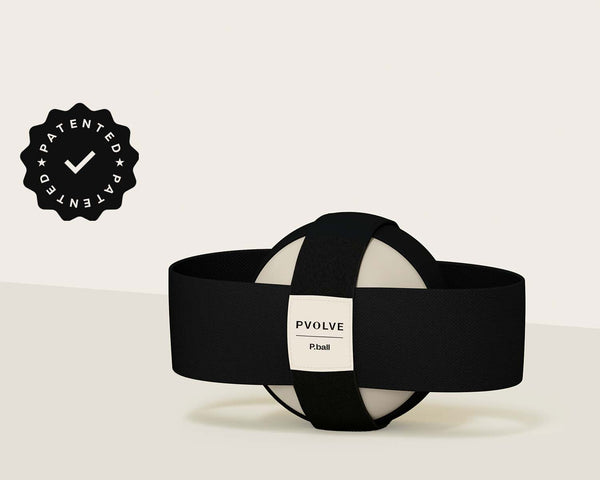According to endometriosis.org, 1 in 10 women suffer from this disease during their reproductive years. That’s approximately 176 million people worldwide dealing with pain and, presumably, looking for a bit of relief in their everyday lives.
Dr. Tewari, Pvolve’s Doctor of Gynecology and member of the Clinical Advisory Board, takes a holistic approach to gynecology that goes far beyond looking at a chart to understand what our bodies need. Here, she’s offering insight into the difficulties of endometriosis and all that it brings. Below, she explains more about endometriosis and how integrating Pvolve into your everyday wellness routine may help manage symptoms.
What is endometriosis?
Medically speaking, it’s the endometrium (the lining inside the uterus that sheds when you have a period) growing outside of the uterus. This out-of-place tissue will grow—in response to hormonal changes just as it does inside the uterus—after you menstruate, resulting in pain and discomfort. It also results in local inflammation, which leads to further discomfort.
How does someone know they have endometriosis?
Typically, painful periods are the most prominent symptom. Mild cramping and pain with periods are common. However, if you’re having to reach for medication during every period, then it’s worth getting checked out. Women with infertility issues, chronic pelvic pain, or irregular menstrual cycles are at increased risk for having endometriosis.
If you’re having painful periods, especially when young, it doesn’t necessarily mean you have endometriosis. About 6-10% of the general population have endometriosis. However, among women dealing with infertility and chronic pelvic pain, the incidence for endometriosis is much higher—about 50% of these women have endometriosis.
So, how can someone differentiate between painful periods and endometriosis? Painful periods will usually respond to treatment with pain meds like ibuprofen or Motrin. However, endometriosis pain often will require more pain meds and hormonal treatment. It’s not always easy to tell them apart.
Typically, younger women suffer from endometriosis. It’s not usually picked up until late teens or 20s, or sometimes, 30s. When you start your period in early teens, your system is still regulating. It takes a few years for the hormonal system to become established, when the communication between the ovaries and the brain is normal in function, and this is reflected in a regular monthly period.
How is endometriosis diagnosed?
There aren’t any definitive tests available for endometriosis, but a clinical diagnosis can be made based on history. A definitive diagnosis can be done, however, through surgery. The surgery is called laparoscopy. A gynecologist looks inside your belly into the pelvis and takes a biopsy of tissue that looks like it could be endometriosis.
But since surgery has its own risks, the first thing to do if you suspect you have endometriosis is a treatment trial with birth control pills. Your doctor will prescribe enough hormones so that it overrides your natural hormonal cycle, and this often will improve or alleviate symptoms. At this point, you may be given the presumptive diagnosis of endometriosis. However, if you don’t respond to hormonal treatment, then surgery is recommended for evaluation and diagnosis.
Why is a well-rounded lifestyle important for someone endometriosis?
Exercise is so important – more now than ever – because we just don’t move our bodies enough. Making exercise a priority is an investment in YOU. This is true for everyone, but those that actually have pain and discomfort will benefit even more from it. Exercise improves circulation, delivering nutrients to the tissues and cells, and removing the toxins by improving function of the organs. Movement is needed to mobilize the lymphatic system, which is our body’s own waste removal service. Poor lymph circulation results in inflammation.
Endometriosis is an inflamed state. When you exercise, endorphins are released and help reduce inflammation. Endorphins are chemicals in the brain that act as natural painkillers—and also improve the ability to sleep, which in turn reduces stress.
And in terms of nutrition, you have to think of your food intake as your interaction with the environment. There are many endocrine disruptors in the environment, and these things could be messing with your natural hormonal rhythm, even for those who aren’t dealing with endometriosis. It is ideal to be on an anti-inflammatory diet and one that promotes healthy hormone metabolism. I believe that if we replete our body with the nutrients needed, then it will be able to function properly. Thus, I offer to do gut and nutritional health evaluations for the women in my practice, so that we can replete the specific nutrients their body needs.
Is exercise typically prescribed for those with endometriosis?
Most patients, and probably some practitioners, don’t see movement as a means of managing symptoms. I definitely always prescribe movement—it is a natural way to decrease pain, inflammation, and improve function of the body. I believe hydration and exercise aid the body in being able to detoxify and remove the toxins. Exercise is not just to help get the weight off (which it does do), but it also helps with improving energy levels, sleeping better, stressing less, and strengthening the immune system. It has a positive impact on our whole body and mind.
I tell everyone that comes to me for help, that it’s not the same prescription for everyone with a similar problem. There may be some patterns and things that I’ve found work for many women, but you’re still unique and we need to figure out what will work best for you and create a program that will meet your needs.
How can Pvolve help manage endometriosis symptoms?
Those with endometriosis especially need to think of their routine in a holistic way, and have movement, meals, and mindset work together as one.
The Pvolve Method is designed with movements that works with your body, and includes a variety of classes to choose from based on what’s happening on any given day. Ultimately, we all need to be listening to our bodies. If we’re in pain, we shouldn’t overwork ourselves. If stretching seems like the only possibility, go with that. If you have energy to burn, that’s the time for a Cardio Burn class. It’s all about following what your body is telling you, and timing that with your cycle as much as possible. The goal is to be in total sync with your own menstrual cycle.
Aside from the workout choices, I’m so drawn to Pvolve’s emphasis on body awareness. It’s not just about movement. It’s about being present in the moment and honing in on the right muscles to actually feel what’s happening in your body. The method demands this sort of focus and allows you to build the neuronal pathways we all need. When you’re in-tune with your body in this way, you’ll hear it whisper things to you—things that don’t feel right, aren’t working—and then you can do something about it.
Endometriosis, like so many diseases, doesn’t just happen overnight. There is something happening beforehand that led to this. Now, you can choose to be present, work with your body, listen to those whispers, and work your way back to optimal health.
MEET DR. TEWARI
Dr. Suman Tewari is an obstetrician-gynecologist in Ann Arbor, MI. She has over 20 years of experience in the medical field and has done additional functional medicine training. Dr. Tewari specializes in helping women with gynecologic issues and restoring optimal wellness by addressing nutritional imbalances.






































